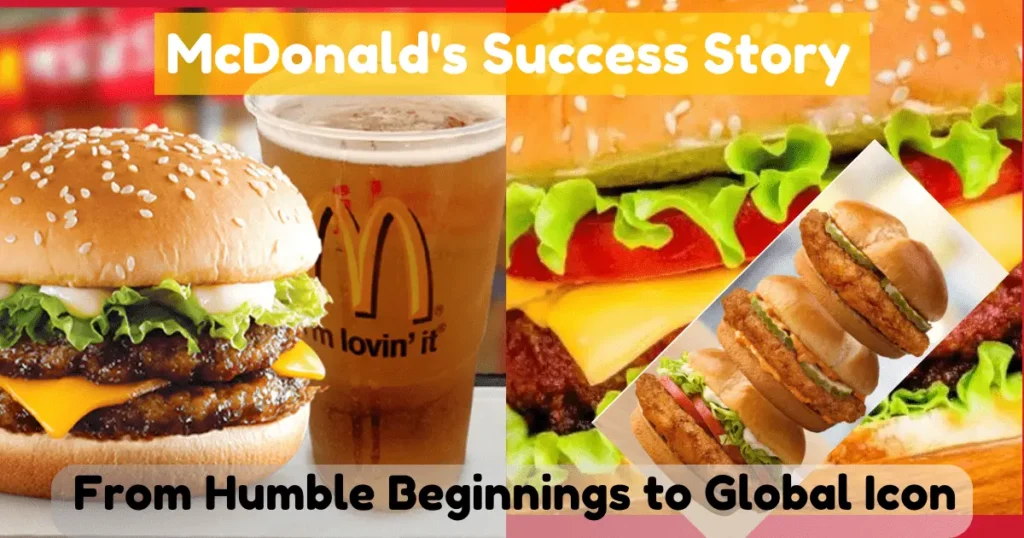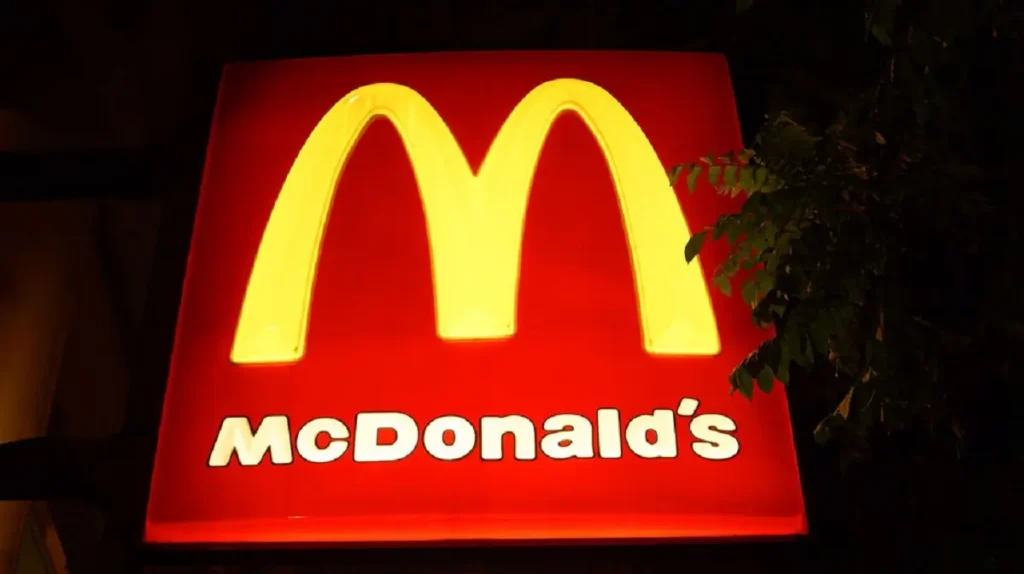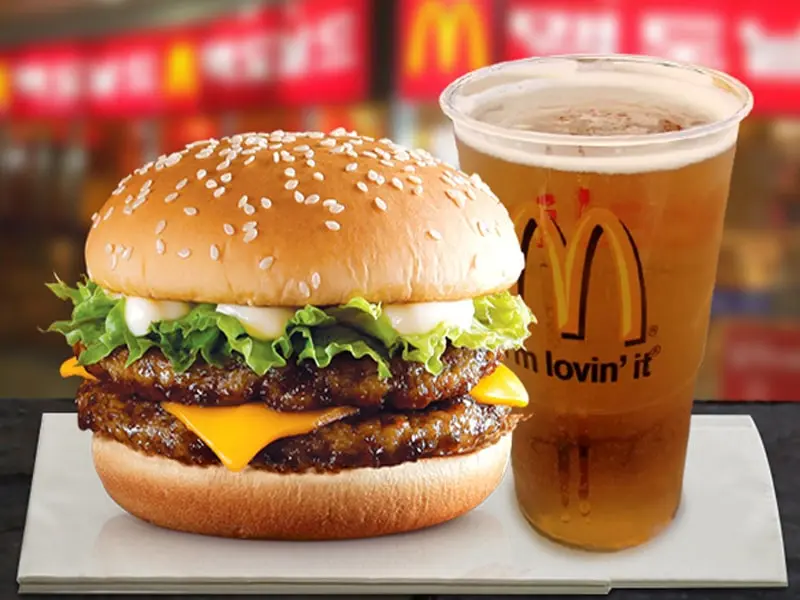McDonald’s Success Story demonstrates its capacity for innovation, adaptation, and upholding a powerful global brand presence. It has attained its highly sought-after position by adhering to its fundamental principles while continuously altering to satisfy the rapidly shifting needs of the fast food sector, its patrons, and the priorities of the industry.
This in-depth analysis looks at the incredible tale of how a little hamburger stand grew into a massive global fast-food business that altered people’s eating habits all across the world. When you think of fast food, perhaps McDonald’s Golden Arches come to mind. Although its name has come to represent fast food, it has gone far beyond multinational giants’ hamburgers and fries. We’ll examine the key elements that led McDonald’s to move into the fast-food market, as we’ll look at the amazing success story of this company.
The Birth of a Fast-Food Empire
McDonald’s, once a humble drive-in restaurant established in 1940 by Richard and Maurice McDonald in San Bernardino, California, has an extraordinary success story. However, its ascent to global fast-food dominance wasn’t without remarkable turns of fate.
A Fast-Food Revolution
In 1954, Ray Kroc, a struggling milkshake machine salesman, joined the successful burger business in San Bernardino, California. This was the start of the McDonald’s success story. The history of fast food underwent a significant shift following this incident.
The Birth of the Franchise
Guided by Ray Kroc, the small burger stand’s growth accelerated. In 1955, the first franchise restaurant opened in Des Plaines, Illinois, pioneering a concept that would revolutionize the fast-food industry.
Golden Arches and Iconic Logo
In 1955, the iconic Golden Arches made their debut, becoming synonymous with McDonald’s worldwide. The brand’s success story has been greatly helped by this catchy and distinctive logo. After the introduction of the well-known tagline, “I’m Lovene’ It”, McDonald’s became a household name.
A Global Phenomenon
The 1960s witnessed McDonald’s rapid expansion across the United States and beyond. Customers were attracted to the brand’s creative approach towards fast food, which included a small menu and quick service. McDonald’s marketed an experience instead of just a hamburger.
McDonald’s Success Story and Innovation
Innovations in Speed and Efficiency
One critical factor that set McDonald’s apart was its innovative approach to food preparation. They introduced the “Speedee Service System,” which later evolved into the modern fast-food model. This system prioritized speed and efficiency, reducing waiting times for customers, a practice still in use today.
Franchising: A Recipe for Expansion
A salesman of milkshake machines, Ray Kroc joined the McDonald brothers in 1955 and launched the first McDonald’s franchise in Des Plains, Illinois. This option was important for the growth of the business as it made rapid growth possible domestically and internationally.
Drive-Thru Revolution
Fast food chain McDonald’s launched the first drive-through service in 1975. Fast food was created even faster thanks to this unprecedented invention, which met the needs of a world that was becoming more and busier.
The Happy Meal
In 1979, the Happy Meal was born. This concept of combining a toy with a child’s meal created a new dimension in marketing and appealed to families worldwide.
McCafé and Beyond
McDonald’s continued to innovate with the introduction of McCafé in 1993. This revolutionary step in the coffee business strengthened the brand’s position in the beverages sector.
Consistency and Quality Assurance
McDonald’s places a premium on consistency. There is no geographical difference in the taste of McDonald’s burgers. The focus on quality control has increased brand trust and customer loyalty.
Serving the Community
McDonald’s has always recognized the importance of giving back to the communities it serves. Through initiatives like Ronald McDonald House Charities, the company has made a positive impact on countless lives.
Global Expansion and Cultural Adaptation
The secret of McDonald’s success is its ability to blend in with local culture without sacrificing its essential brand identity. To suit local tastes, McDonald’s customized its menu, serving the Teriyaki Burger in Japan and the McPaneer burger in India.
Challenges and Adaptations
McDonald’s has faced many difficulties, including concerns about the health effects of fast food. In response, the business expanded its customer base by offering healthier menu options.
Future Prospects
As long as it keeps expanding and adjusting to the changing times, McDonald’s has a promising future. The Golden Arches are still running strong with a commitment to sustainability and a growing worldwide reach.
FAQs
Q1. How did McDonald’s become successful?
Ans: McDonald’s achieved success through a combination of innovative business strategies, including the introduction of the Speedee Service System, franchising, iconic marketing campaigns like the “Golden Arches,” and a focus on consistency and quality in their menu offerings.
Q2. What is McDonald’s key success?
Ans: One key to McDonald’s success lies in its ability to adapt to changing consumer preferences. Their menu diversification, international expansion, and commitment to affordability have been instrumental in maintaining their global popularity.
Q3. What is the brief story of McDonald’s?
Ans: McDonald’s began as a small drive-in restaurant in San Bernardino, California, in 1940, founded by Richard and Maurice McDonald. Ray Kroc later joined them, and together, they developed the franchise model that led to McDonald’s global expansion.
Q4. Who made McDonald’s successful?
Ans: The success of McDonald’s can be attributed to the combined efforts of the McDonald brothers (Richard and Maurice) who established the original concept, and Ray Kroc, who played a pivotal role in franchising and expanding the brand.
Q5. Was McDonald’s successful at first?
Ans: McDonald’s struggled initially but gained momentum after Ray Kroc took over the franchising operations. It began to have long-term success in the 1960s when it emerged as a major force in the fast-food sector.
Q6. What is McDonald’s main message?
Ans: McDonald’s main message centers on providing convenient and enjoyable dining experiences for their customers. They emphasize consistency, quality, and affordability in their menu offerings.
Q7. Who is the CEO of all McDonald’s?
Ans: As of my last knowledge update in January 2022, the CEO of McDonald’s was Chris Kempczinski. Please note that executive positions may change over time, so it’s advisable to verify the current CEO through a recent Google search.
Conclusion
McDonald’s success story demonstrates its ability to innovate, adapt and maintain a powerful global brand presence. From single hamburger stands to global chains, McDonald’s has evolved to better serve customers, becoming a symbol of American culture and increasingly a major force in the fast food industry.
We might be motivated by McDonald’s journey—which shows us that even the humblest beginnings can lead to global recognition and power—when we reflect on their success story. So remember that the next time you indulge in a Big Mac or Happy Meal, you’re not only getting to eat some amazing food—you’re also experiencing a little history.
If You’re Interested in Learning More About Personal Finance Planning?
Check out Our Website at https://themoneybeez.com/personal-finance/


